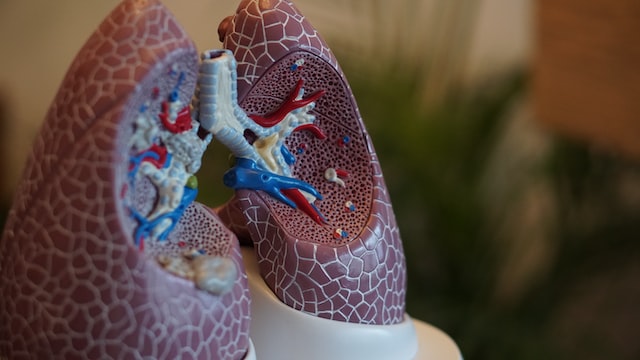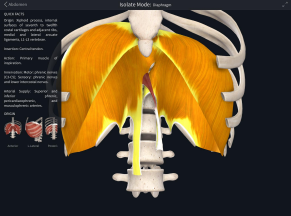
Have you been huffing and puffing while climbing a flight of stairs? Are you wheezing when you go for a jog? Is it getting worse?
Worsening symptoms should signal a visit to your doctor.
These could be signs and symptoms of a bigger breathing issue, which could be affecting your ability to go for daily walks with your dog, carry your groceries up to your second floor apartment, or attend your kids/grandkids sporting events.
If you have been recently diagnosed with a chronic respiratory disease and are having difficulty breathing with exercise or daily activities, then this blog is for you!
Let’s talk a little more about chronic diseases that affect breathing and learn how practicing specific breathing techniques with your physical therapist can help to manage your symptoms.
Reach out to JACO Rehab to learn more about 1-on-1 physical therapy sessions.
Chronic Diseases That Affect Breathing
According to The World Health Organization (WHO), chronic respiratory diseases that can alter your ability to breathe include:
- chronic obstructive pulmonary disease (COPD)
- asthma
- occupational lung disease
- pulmonary hypertension
Although sleep apnea is not listed above, The American Sleep Apnea Association states that at least 70% of adults in the U.S. report poor sleep at least one night a month, and 11% of adults report poor sleep every night.
Those who suffer from chronic lung diseases are at a higher risk of developing sleep apnea, thereby losing out on truly restful sleep!
You need restful sleep to stay healthy. Read more about sleep’s role in rehab and recovery for tips on proper sleep hygiene and how to improve your sleep patterns.
The Most Common Chronic Respiratory Diseases
For now, let’s focus on how practicing proper breathing techniques can benefit two of the most common chronic respiratory diseases: Asthma and COPD.
Asthma
According to The American College of Allergy, Asthma, and Immunology (ACAAI), 8.3% of Americans, both children and adults, have asthma. This means asthma is the number one chronic disease in children.
The WHO states that 262 million people worldwide are affected, making asthma a global health problem.
Asthma is a chronic inflammation of the lung airways that results in their narrowing. It causes varying degrees of coughing, wheezing, chest tightness, and shortness of breath.
Asthma can be exercise-induced and is generally worse at night. It can easily affect daily life: playing with kids/grandkids, participating in sports, and sleeping restfully.
Asthma cannot be reversed. However, you can manage symptoms by inhaling corticosteroids as prescribed, avoiding personal triggers, and learning how to breathe properly and efficiently.
COPD
Chronic obstructive pulmonary disease umbrellas other chronic lung diseases, including:
- Chronic bronchitis: a cough caused by a build-up of mucus in the airways
- Emphysema: an injury of the tiny air sacs in the lungs where gas exchanges occur
COPD only affects adults and usually becomes worse with time. You can prevent COPD by avoiding indoor/outdoor air pollutants, tobacco smoke, and occupational hazards.
Treatments for COPD include similar inhalants to the treatment of asthma. It also includes pulmonary rehabilitation where patients practice proper breathing techniques during monitored exercise to improve lung function.
Physical therapists are highly trained to work on proper breathing mechanics with exercise and activity. We can teach you how to increase your overall breathing efficiency and endurance, which can improve the quality of your life.
How We Breathe
Breathing is the process of how we get vital oxygen to our cells in order to produce energy through a multitude of chemical reactions, and is made up of two phases: the inspiratory phase and the expiratory phase.
Inspiratory Phase: Oxygen is delivered to the cells, and exchanged for carbon dioxide, a by-product of aerobic respiration which produces energy for muscle cell contraction and organ function.
Expiratory Phase: Carbon dioxide is then released out of the body to maintain a healthy acid-base (pH) balance in our bodies for optimal functioning.
Breathing is normally a passive process. This means that inspiration and expiration do not require conscious effort and are controlled by central neural mechanisms, the muscles they control, and changes in air pressure.
Mouth-breathing, inflamed sinuses, or narrowed airways due to asthma or COPD can change air pressure and influence central neural mechanisms. In turn, this can alter how the muscles around the rib cage behave, thereby also altering your breathing mechanics and how efficiently we absorb oxygen or expel carbon dioxide.
So, what can you do to improve your breathing efficiency and overall aerobic endurance?
Exercises for Better Breathing
Prior to initiating either of the breathing exercises described below, be sure to follow up with your doctor to ensure these techniques are safe and right for you, or seek physical therapy services!
Strengthen Your Diaphragm with Diaphragmatic Breathing
The diaphragm is a large, domed-shaped muscle that sits at the base of your lungs. It is the primary muscle for inhalation and works closely with the external intercostals, the secondary muscles involved in inhalation.
- The Diaphragm
The diaphragm is attached along the rib cage and works to expand the chest cavity. When the chest expands, it creates a low-pressure environment for air to flow into the lungs.
When you breathe normally, you do not use the power of the diaphragm to its full potential. You don’t always need to.
But, by practicing diaphragmatic breathing, you can work on strengthening the diaphragm. A strong diaphragm can allow you to take longer and slower breaths that feed the body needed oxygen for peak performance!
Perform diaphragmatic breathing:
1. Lie on your back with your head and neck supported and knees bent OR sit with your back supported.
2. Place one hand on your chest and the other just below your rib cage, which is where the diaphragm is located.
3. Inhale slowly through your nose, counting to 5 seconds in your head. Ensure that the hand just below your rib cage rises above the hand on your chest. Think about filling your belly with air like a balloon.
4. Once you have completely “filled” your belly up, exhale slowly for 5 seconds through pursed lips. Think about blowing out birthday candles.
5. Perform this cycle of breathing approximately 10 times, but be sure to avoid any lightheadedness. If you feel lightheaded, stop and breathe normally for a few breaths until you’re ready to try again.
Open Your Airways With Pursed-Lip Breathing
Pursed lip breathing is the act of “pursing” or “puckering” your lips when you exhale. It is the most effective way to control shortness of breath if you have a disease like COPD where air is trapped in your airways.
Pursed-lip breathing helps open airways to allow old air to escape the lungs, which makes room for new air to enter. It also improves breathing efficiency by slowing your overall breathing rate through prolonged exhalation.
This is a useful technique to recover from strenuous tasks such as climbing up stairs, long walks, or jogging.
Practice pursed-lip breathing:
1. Be sure to relax. Then, start in a comfortable and supportive position, either laying flat on your back or sitting in a chair with back support.
2. If you have difficulty prolonging your breathing, start with breathing into your nose for 2 seconds. Then, work your way up to 5 seconds.
3. During the exhale, “purse” or “pucker” your lips like you’re blowing out birthday candles for twice as long as you inhale.
4. Perform this cycle of breathing approximately 10 times. Be sure to avoid any lightheadedness. If you feel lightheaded, stop and breathe normally for a few breaths until you’re ready to try again.
Breathe Better!
If you or someone you know is experiencing difficulty breathing with exercise or daily activities and has been diagnosed with a chronic respiratory disease, reach out for help!
Please call JACO Rehab at (808) 381 – 8947 to schedule an appointment with us. Mahalo!
Written by Jenn Lewis, DPT
